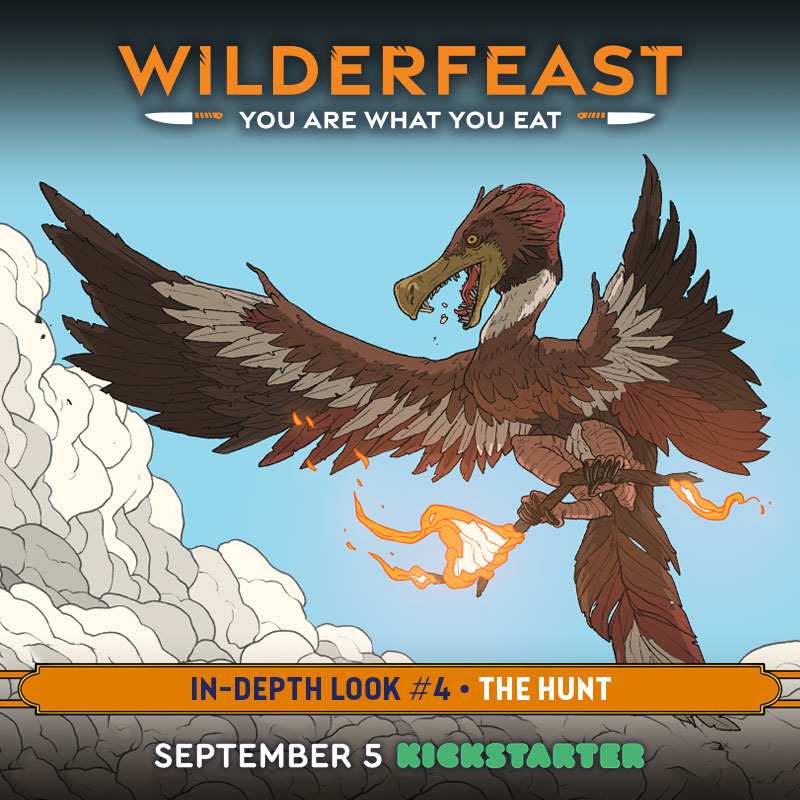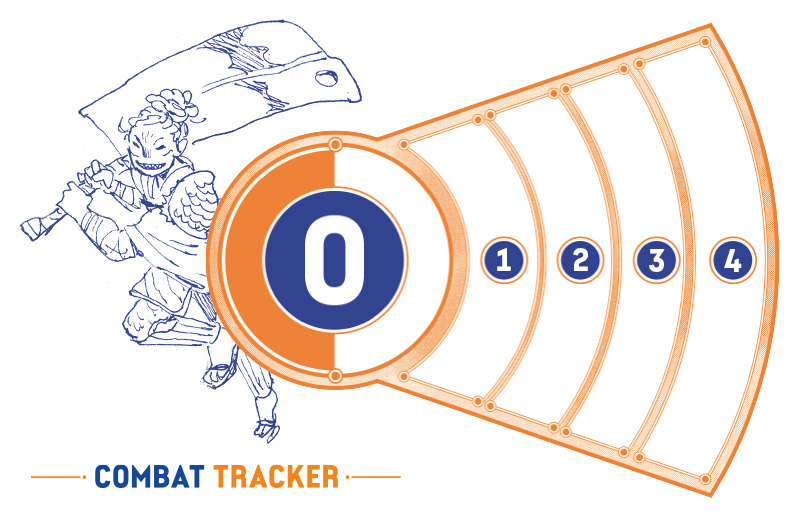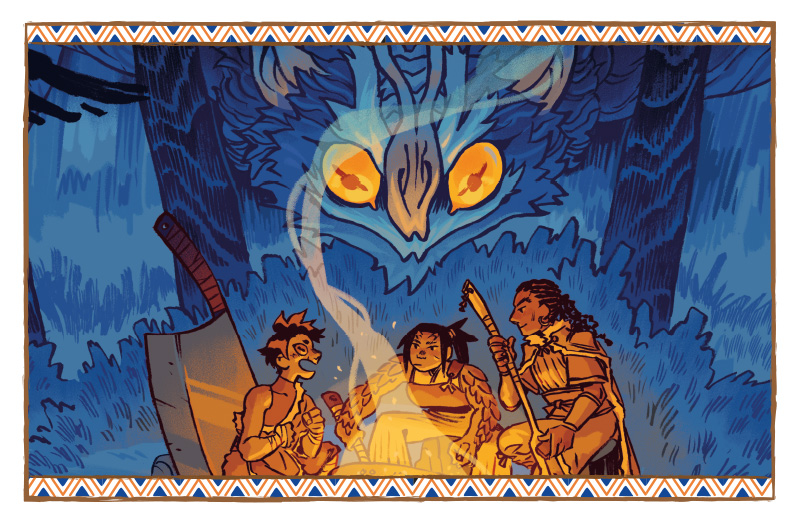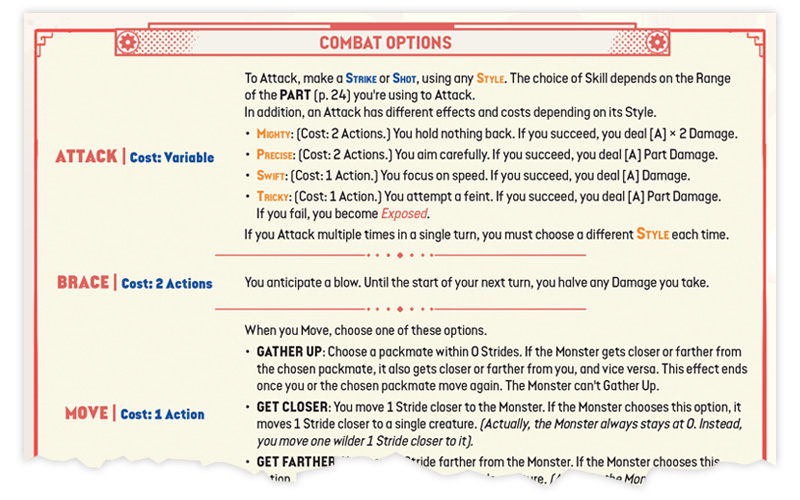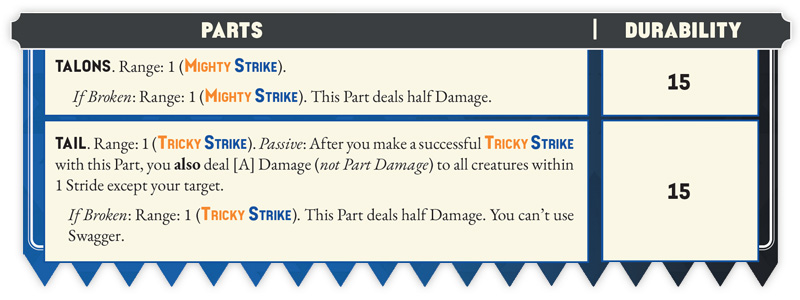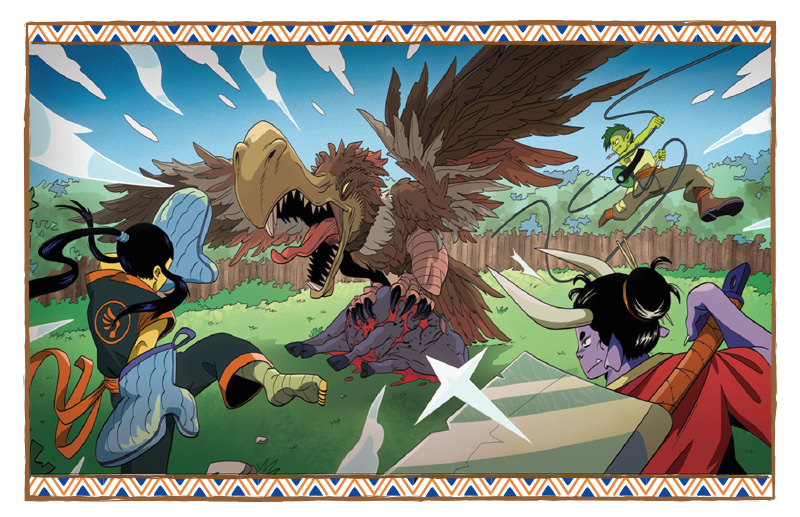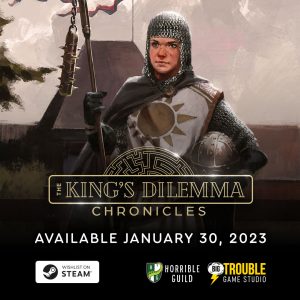Welcome back to Wilderfeast Restaurant! Our tasting menu offers a series of insights into the lore of the One Land and various aspects of the game mechanisms. In this fourth course, we will serve a wild-flavored jaegerschnitzel steak with a creamy mushroom sauce, describing one of the most exciting parts of the game: The Hunt, i.e., the rules for combat and monster behavior.
Combat orbits around the Monster. Thus, you measure all distance in combat relative to the Monster, using Strides. Strides don’t have a set length, but generally speaking they’re closer in size to the Monster’s strides than yours. Most wilders spend combat between 0 Strides, where you’re right on top of the Monster, and 4 Strides, where you just barely register as a threat.
This number represents the distance you’re maintaining, not your static position. At all times during a hunt, you’re circling the Monster, chasing after it, or driving it toward favorable terrain. Moving around or with the Monster is automatic; moving towards or away from it takes effort. You also use Strides to measure distance between one wilder and another.
At the start of a combat, the Guide establishes every wilder’s starting distance. This is more art than science, and it depends on context: for example, if you encountered the Monster in a forest with plenty of cover, everyone starts 2 Strides away, while in an open field it would have been 3. On the other hand, if the Monster has been stalking you unseen ever since you entered its territory, one unlucky wilder might start 1 Stride away from the Monster as it pounces on them, while all others are a distant 4 Strides away.
Then, the Guide decides who has the initiative. Again, this depends on context. As a rule of thumb, if the pack entered the Monster’s Area, they have the initiative. Conversely, if the Monster entered the pack’s Area, it has the initiative.
At the start of each round, the Monster chooses its target. Then initiative alternates between sides, starting with the wilders. Each wilder takes one turn per round, while the Monster takes a turn after each wilder.
The Monster has two types of turns: usually it takes a short turn, where it gets 1 Action, but once per round the Guide can declare the Monster is taking a full turn, where it gets 3 Actions instead.
After every wilder has taken a turn, and the Monster has taken a number of turns equal to the number of wilders, a new round begins, starting with the wilders. Each wilder gains 3 Actions at the start of their turn during combat, which they can spend on many different options. The Monster can spend its Actions on the same options.
To represent their most significant features, monsters have Parts (like shells, wings, claws, and so on). Many Parts have a Passive ability, with an effect that happens whenever a trigger is met, even during a wilder’s turn, without costing Actions or Stamina.
Parts may also have a Range (expressed in Strides), meaning that the Monster can use them to Attack within that distance. Parts also have Durability, which you can think of as their Stamina. When a wilder deals damage to a Part, it loses Durability, and the monster also loses an equal amount of Stamina.
With enough damage, Parts can be broken, which may change their Range and Attack strength, or even disable any special abilities they may have granted while not broken.
Remember: Monsters are powerful, but predictable. A Monster chooses a target at the beginning of the round, and they can only have one target at a time: while they can use special abilities on other creatures, the target is the only one they will Attack, unless they take it down earlier or other criteria are met which allow the Monster to change target mid-round. Wilders may also force them to change targets with a Taunt.
Monsters also have other patterns of behavior, like the way they pair Styles and Parts together to Attack, or the timing of their full turn. These are all very important factors that you must keep in mind to come up with your fighting strategy as a pack. Monsters aren’t automatons though: the Guide should always make them follow their instincts wherever it makes sense.
We hope you have savored the flavor of this fourth course of our Wilderfeast tasting menu, the last focusing on the main phases of the game’s core loop. Next time we will serve you a second course of braised venison accompanied by ethological salad: our next topic is Monsters!
Until next time!

